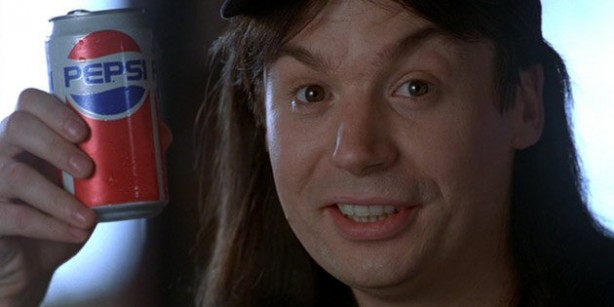 Tech
Tech
A major label is retroactively adding product placement into their music videos
by Mark Teo
September 29, 2014
Product placement in music videos isn’t a new thing by any means: Beats By Dre, for example, have been clearly paying for placement in countless vids since 2008, including efforts by Soulja Boy, Lady Gaga, and Snoop Dogg. Nicki Minaj’s ever-controversial “Anaconda” video has clear, can’t-miss brand affiliations to MYX Fusions. Avril Lavigne’s been spotted rocking Converse shoes; Britney Spears has been caught browsing Plentyoffish.com; Sony’s notorious for infusing culture with that marketing guap (see: The laptops, phones, and headphones in “Rock ‘N’ Roll,” “Hold It Against Me,” and films like Skyfall and The Amazing Spider Man 2). So before the outrage boils over, know this: Product placement is very, very common in music videos.
Still, what Universal Music is doing is something brand new—the label has signed a deal with MirriAd, a digital ad agency, to retroactively place products into music videos. So, who are MirriAd? According to their website, they’re a company whose “computer vision technology creates a new standard in advertising where a brand integration is an affordable, scalable ad unit running in multiple pieces of content.” Whatever that means.
So, how will it work? According to the The Independent, products will be superimposed into videos. Brands can buy space in the video for a limited amount of time, before another brand steps in. Grand Marnier is the first brand on board, and they’ll be added into an Avicii video. When their time’s up, we can only assume another boozy brand—Grey Goose? Hennessey? Colt 45?—will take their place.
Avicii, too, may only be the start: A quick glance down Universal’s roster shows names such as Justin Bieber, Drake, and Kanye West.
Is it disconcerting? You bet. It certainly makes digital advertisement more ubiquitous—and harder to ignore with, say, an adblocker that vets YouTube pre-roll—and, as the Independent notes, is a way to speed up the production process, meaning that brands can enter music videos without months of deliberation.
And, of course, the partnership between Universal and MirriAd comes with its own quotes. “Being inside content is more valuable than being outside content,” Mark Popkiewicz, Mirriad’s chief executive, told the Financial Times .
But while the act of adding ads to previously shot videos feels slimy, it’s not particularly any slimier than, well, the advertising we’re accustomed to. After all, is there really a difference in adding another brand to Lady Gaga’s “Telephone” video, which features more than 10 products? Does it matter if Sony or Apple pays for placement? Is there really a difference between featuring Coke in one video, Mountain Dew in the next? The question of artist consent—whether an artists wants to work with a brand for any given video—persists, but let’s be honest: If an artist is receptive to placement for, say, Pepsi, it’s not a stretch that they’d be open to working with Fanta.
Watch the video below, and tell us that product-placement isn’t interchangeable.
Plus, integrating more advertising into videos may represent a much-needed revenue stream for labels—even beyond Universal. Is the trust of the music-video watching public worth the revenue? We’ll see.
So, what do you think: Retroactive product placement—is it any less ethical than regular advertising? Let us know in the comments.
Tags: Tech, Avicii, Universal Music





